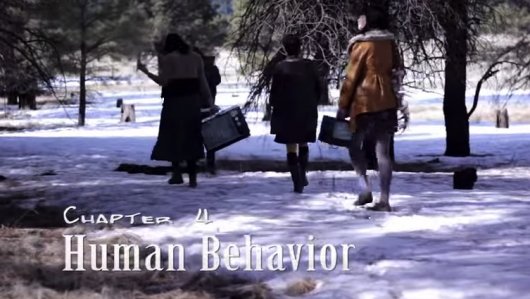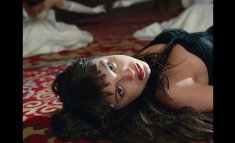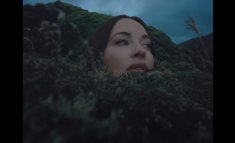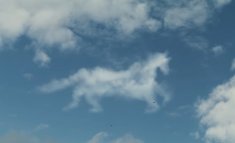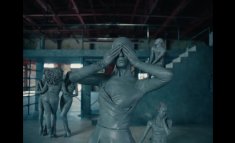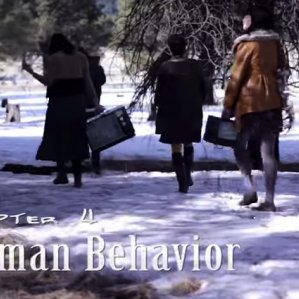Since their start in late 2012, Human Behavior has been interpreting Americana through an abstract lens. They combine the imagery of American gospel music with freak-folk experimentalism. They display this eccentricity not only in their sound, but also through video art, projected on vintage TVs. Human Behavior's mixed genre has allowed them to fit in anywhere, from clubs to art galleries, theaters to garages, living rooms to caves. They have opened for Xiu Xiu, Waxahatchee, Andrew Jackson Jihad, Emperor X, and played a Burger Records Showcase. Human Behavior has built a devoted following, across the United States and elsewhere, and is currently touring in support of their new album, Bethphage. Tuscson Weekly appropriately called the album "inspiring goth-folk or bluegrass drone, take your pick." Before Bethphage, Human Behavior recorded all of their music in closets and bedrooms, but this time they decided to try something different and team up with Saint Cecilia Studios, located in the heart of downtown Tucscon, Arizona. With chandeliers dangling from the ceiling and candles burning in the dim-lit room, it was much like spending time at an altar. Andres Parada, the group's songwriter and core member, didn't sleep much and found it difficult to eat over the course of the time they spent at Saint Cecilia’s, but the nervous tension in Parada’s belly found solace in the recording process.Bethphage, a patient and drony, almost ambient collection of somber folk songs, embraces feelings of downheartedness and disbelief, parodying tradition and redefining the American folk ballad. Including parodies of traditional folk songs, like "Shout Sister Shout" by Clarence Williams and "Farther Along" by Rev. W.A. Fletcher, drone dobro interludes written by Ronald Stanage, samples from Parada’s childhood home videos, and other more traditional folk-pop compositions, Bethphage explores depression and music as its medication. Throughout the album the listener might also notice intentional tributes to other somewhat like-minded musicians, such as quotes from the music of the Pacific Northwest’s melancholic artist Phil Elverum (better known as Mount Eerie or The Microphones) and references to the social-political songs of Chile’s La Nueva Canción Chilena. In its entirety, Bethphage simultaneously appreciates and criticizes tradition. It explores a brief moment in Jesus' life through the biographical perspective of a non-believer. It connects American folk music along the timeline of religion. Human Behavior has always been an ever-changing lineup, ranging from one to thirteen members, with new installations of video art for every tour. Andres Parada, songwriter and videographer, is the one steadfast component. He uses the project to portray his manic-depressive lows, which often crescendo to orchestral highs. His concepts encompass Catholic guilt, drug addiction, obsessive compulsive disorder, and ethnic identity confusion, all in the framework of experimental sound and film. The second installment in a trilogy of albums by Human Behavior, Bethphage is now available from multiple outlets. Calling the album "an epic journey, treading a stark yet unforgiving landscape," Folktale Records released the album on both black and mint-green vinyl on February 3, 2015. Diet Pop Records made a CD available on February 25, 2015, stating "their dark, catchy folk songs are now drawn out into epic drones dealing with suicide and depression." And Human Behavior has self-released the album digitally via Bandcamp. Follow their extensive tour at Human Behavior’s official website and, in the meantime, you should definitely buy this album.
This video, directed by Alyssa Burkett, featured "Chapter 4" from Bethphage.
